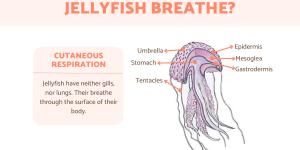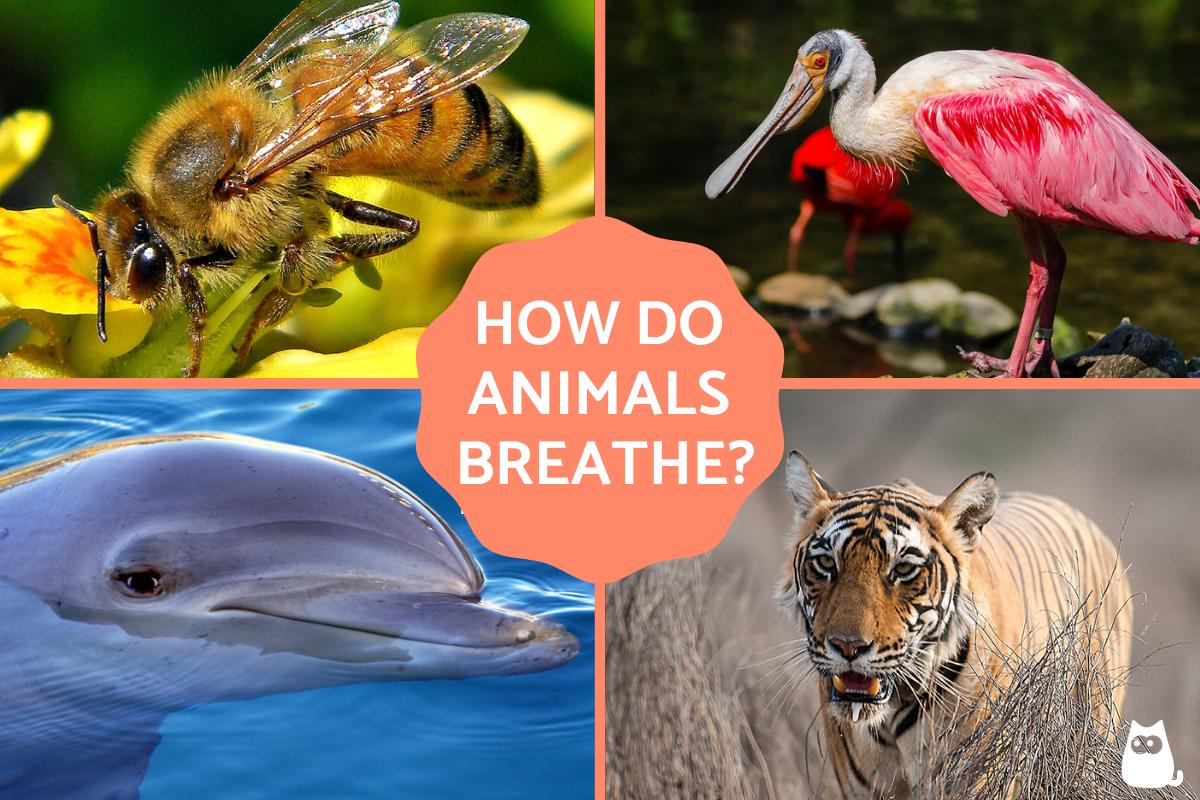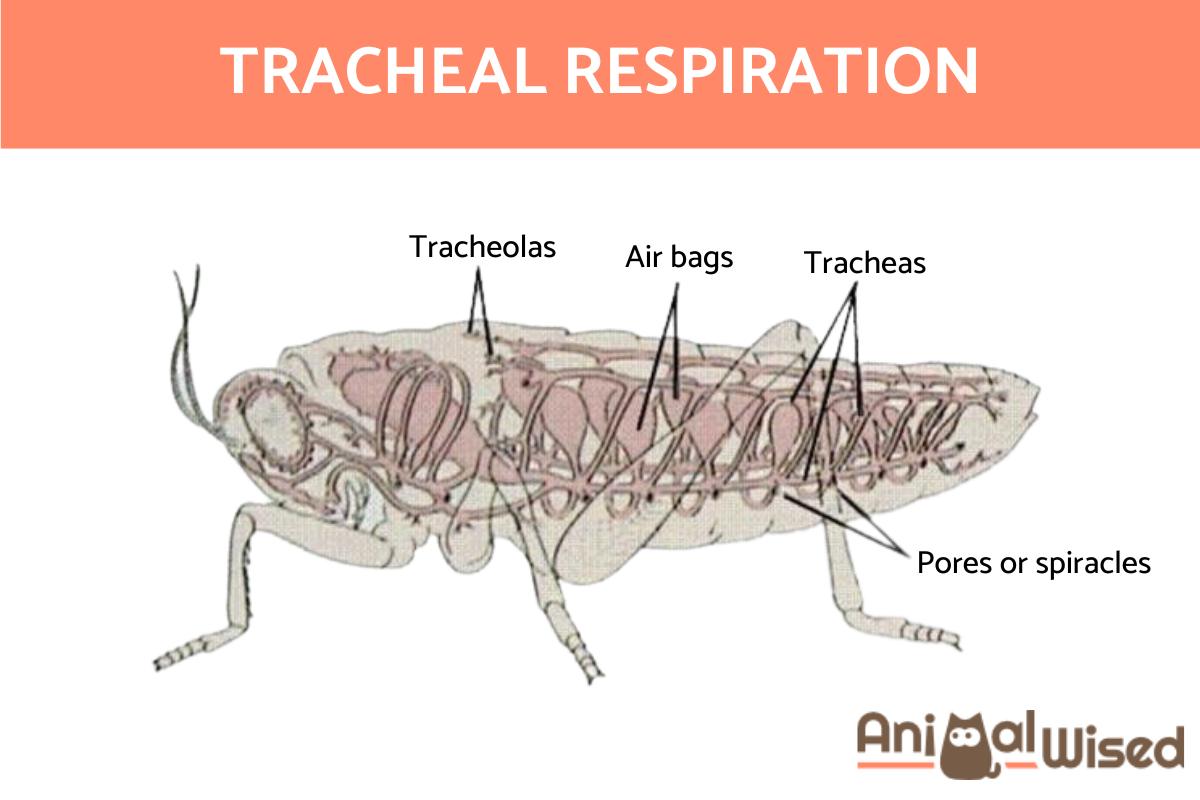How Do Animals Breathe?


Respiration is a vital function for all living things, from protozoa to higher animals and, of course, humans. Animals have different respiratory systems, depending on the species and the mechanisms that have developed over centuries of evolution. These systems vary in complexity depending on the species, energy requirements, and environment in which they live.
The following AnimalWised article explains how do animals breathe and what are the different kinds of respiration.
How do animals breathe?
When we speak of animal respiration, we refer to the metabolic mechanism of the living beings of the animal kingdom. This process consists of gas exchange with the environment, introducing oxygen (O2) into the body and expelling carbon dioxide (CO2). Oxygen is a vital gas for processing sugars and obtaining biochemical energy for life, while carbon dioxide is a byproduct of this reaction that must be excreted because it is harmful to the organism.
Respiration is common to all known animals, from protozoa to higher animals and, of course, humans. Some animals breathe directly through the air, like humans and dogs, others through water, like fish and tadpoles. Over the centuries of evolution, species have developed mechanisms that vary according to complexity, energy requirements, and environment.
Organisms that are too large to meet their oxygen requirements by diffusion from the environment are equipped with specialized respiratory structures in the form of gills, lungs, tracheae, etc. Typical respiratory structures are attenuated and have a large semi-permeable surface area relative to their volume.
Respiration can be divided into four main groups according to the different respiratory organs and structures involved in the process, namely:
- Pulmonary respiration: mainly mammals, birds, reptiles, and some amphibians. These lungs may differ anatomically from species to species. For example, some animals have only one lung, while others have two.
- Branchial respiration: This is the type of breathing that most fish and marine animals have, especially fish and crabs. In this type of breathing, gas exchange occurs through the gills, a respiratory organ used to extract oxygen from the water.
- Tracheal respiration: this is the most common type of respiration in invertebrates, especially insects, millipedes, and spiders. Here, the circulatory system does not interfere with gas exchange. These animals exchange oxygen and carbon dioxide between their tissues and the air through a system of air-filled tubes called tracheae.
- Cutaneous respiration: Skin breathing occurs primarily in amphibians and other animals that live in moist areas and have thin skin. In skin respiration, as the name implies, gas exchange takes place through the skin.
In the following sections, we will explain in more detail what each of these respiratory modes consists of and which animals use them.
Pulmonary respiration
This type of respiration is characterized by the fact that gas exchange takes place through the lungs. It occurs in terrestrial vertebrates (such as mammals, birds, and reptiles), aquatic animals (such as whales), and amphibians, which can also breathe through their skin.
Depending on the vertebrate group, the respiratory system has different anatomical adaptations and the lungs change their structure.
Pulmonary respiration in amphibians
In amphibians, the lungs may be simple vascularized sacs, such as those of salamanders and frogs. The lungs of most amphibians receive much of the total blood flow from the heart. The lungs of amphibians are simple, sac-like structures that do not have the complex, spongy interior appearance of the lungs of birds and mammals. They are divided into chambers with folds that increase the surface area for gas exchange.
Pulmonary respiration in reptiles
Reptiles have more specialized lungs than amphibians. They are divided into numerous spongy air sacs that are interconnected. The total surface area for gas exchange is much greater than that of amphibians. The number of lungs can vary from species to species. For example, some lizard species have two lungs, but snakes have only one.
Pulmonary respiration in birds
Birds, on the other hand, have a more complex respiratory system due to their function of flight and the large oxygen demand associated with it. Their lungs are ventilated by air sacs, structures unique to birds. The air sacs are not involved in gas exchange, but have the ability to store and expel air, i.e., they act as bellows that allow the lungs to always have reserves of fresh air inside.
Pulmonary respiration in mammals
Mammals have two lungs with elastic tissue divided into lobes. Their structure resembles a tree, as they branch into bronchi and bronchioles, up to the alveoli, where gas exchange takes place. The lungs are located in the thoracic cavity and are bounded by the diaphragm, a muscle that helps them and which, through its expansion and contraction, facilitates the entry and exit of gasses.
You may be interested in this other article, where we explain how reptiles breathe.

Branchial respiration
Branchial respiration means the respiration through gills. The gills are the organs responsible for underwater breathing. They are external and are located behind or to the side of the head, depending on the species. They may occur in two ways: as grouped structures in the gill slits or as branched appendages, as in the larvae of newts and salamanders, or in invertebrates such as the larvae of some insects, annelids, and mollusks.
Water entering through the mouth exits through the slits, and oxygen is "captured" and delivered to the blood and other tissues. Gas exchange occurs with the same water flow or with the help of the operculum, which directs the water to the gills.
Examples of animals that breathe through the gills:
- Giant oceanic manta ray (Mobula birostris)
- Whale shark (Rhincodon typus)
- Pouched lamprey (Geotria australis)
- Giant clam (Tridacna gigas)
- Big blue octopus (Octopus cyanea)
If you want to know more about this way of breathing underwater, you might be interested in this other article, where we talk about how fish and other marine animals breathe.
Source: Paperweight

Tracheal respiration
Tracheal respiration in animals is most commonly found in invertebrates, especially insects, arachnids, myriapods (centipedes and millipedes), etc.
The tracheal system consists of a branching of tubes and ducts that run throughout the body and are directly connected to the other organs and tissues, so in this case the circulatory system does not interfere with gas transport.
Oxygen is mobilized without reaching the hemolymph and enters the cells directly. Hemolymph, also known as haemolymph, is the fluid of the circulatory system of invertebrates such as insects, which serves a similar function to blood in humans and other vertebrates. These ducts, in turn, are directly connected to the outside world through openings called stigmas or spiracles, through which CO2 can be expelled.
Examples of animals that breathe through the tracheas
- Common whirligig beetle (Gyrinus natator)
- Grasshopper (Caelifera)
- Ant (Formicidae)
- Bee (Apis mellifera)
- Asian hornet (Vespa velutina)

Cutaneous respiration
Cutaneous respiration, also known as cutaneous gas exchange, is a type of respiration that occurs through the skin rather than the gills or lungs in certain groups of animals. Almost all animals take in trace amounts of oxygen through their skin. However, there are a few animals that rely almost exclusively on skin respiration to take in all or most of their oxygen. These organisms are usually small and have low metabolic activity because their respiratory capacity is small.
Most of these animals that breathe through the skin live in aquatic environments or very humid places because it is only effective in these environments. For this type of breathing to be possible, the skin must not only be moist, but also very thin so that oxygen and carbon dioxide can diffuse through it. To facilitate this process, the skin must also be well supplied with blood in its inner layers.
Animals that use this type of respiration also have lungs or gills to facilitate respiratory exchange and supplement skin respiration. In fact, only salamanders survive solely by skin respiration.
Examples of animals that breathe through the skin
- Common earthworm (Lumbricus terrestris)
- European medicinal leech (Hirudo medicinalis)
- Boscá's newt (Lissotriton boscai)
- Western spadefoot (Pelobates cultripes)
- Perez's frog (Pelophylax perezi)
- Purple sea urchin (Paracentrotus lividus)
If you want to learn more about this type of breathing, do not miss this other article, where we discuss skin breathing and give you more examples of animals that breathe through their skin.
Source: Paxala

If you want to read similar articles to How Do Animals Breathe?, we recommend you visit our Facts about the animal kingdom category.
- Bosch, D.L. (2016). All you need is Biology . Retrieved from How To Breathe Without Lungs, Lissamphibian Style: allyouneedisbiology.wordpress.com.
- Chapman, R.F. (1998). Cutaneous Respiration . In RF Chapman, The Insects: Structure and Function (p. 452). New York: Cambridge University Press.
- Jabde, PV (2005). breath . Text Book Of General Physiology (p. 112). New Delhi: Discovery Publishing House.
- Kardong, KV (2007). Vertebrates: Comparative Anatomy, Function, and Evolution . Ed, McGraw Hill.
- Schilman, PE (2007). The respiration of arthropods with tracheas . Science Today, 17, 22-26.









